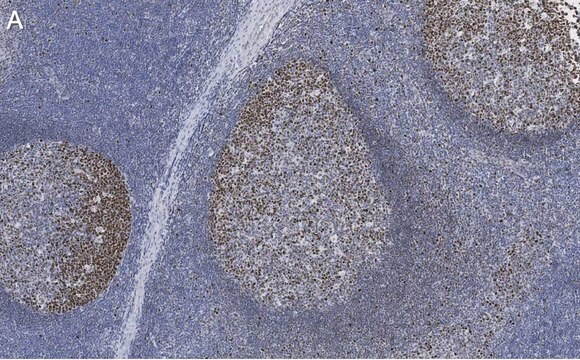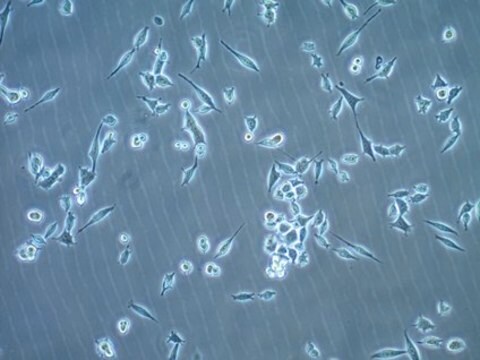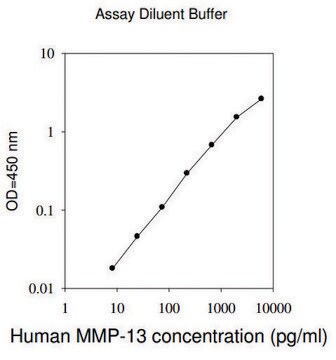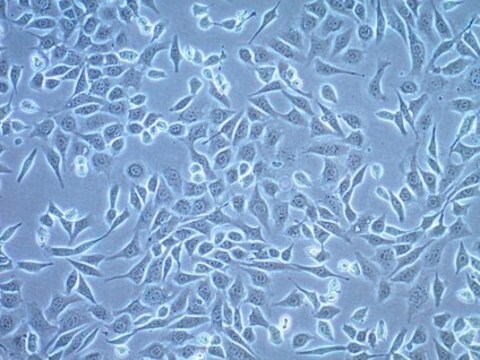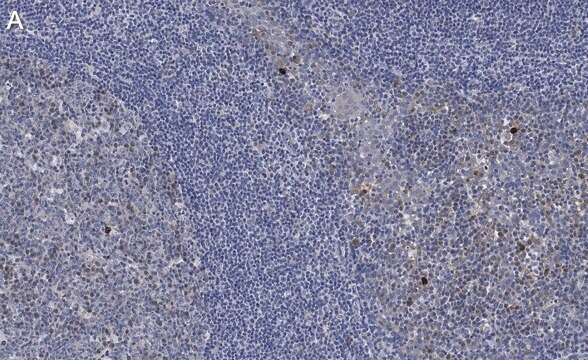SCCAR10148
Assay Ready MB49 Mouse Bladder Carcinoma Cell Line
Sinônimo(s):
MB-49, mouse bladder carcinoma, murine bladder carcinoma
Faça loginpara ver os preços organizacionais e de contrato
About This Item
Código UNSPSC:
41106514
NACRES:
NA.81
Produtos recomendados
fonte biológica
human
Nível de qualidade
embalagem
vial of 1 vial
fabricante/nome comercial
Millipore
técnica(s)
cell culture | stem cell: suitable
Condições de expedição
liquid nitrogen
temperatura de armazenamento
−196°C
Descrição geral
MB49 cells are derived from C57BL/Icrf-a′ mouse bladder epithelial cells that were transformed by a single 24-hour treatment with the chemical carcinogen 7, 12-dimethylbenz[a]anthracene (DMBA) on the second day of a long term primary culture (1). Transformed cells transplanted into syngeneic mice were shown to generate carcinomas (1). While of male origin, karyotype analyses indicate the loss of the Y chromosome in 100% of the cells analyzed (2). This abnormality is a frequent early event in human bladder cancer.
A recent study indicates that MB49 cells recapitulate key features of sex differences in bladder tumor growth (3). MB49 implantation in mice resulted in significantly larger tumors in males than females. In the presence of dihydrotestosterone, MB49 cells exhibited enhanced proliferation in a dose-dependent manner. In contrast, MB49 cells were unresponsive to the pregnancy hormone, human chorionic gonadotrophin (hCG) (3).
MB49 cells exhibit low to no expression of MHC-Class I and II molecules (4). However, upon exposure to IFN-?, the expressions of MHC Class I and II are significantly upregulated (4).
References:
1. Summerhayes IC, Franks LM (1979) Effects of donor age on neoplastic transformation of adult mouse bladder epithelium in vitro. J Natl Cancer Inst 62(4): 1017 - 1023.
2. Fabris VT, Lodilinsky C, Pampena MB, Belgorosky D, Lanari C, Eiján AM (2012) Cytogenetic characterization of the murine bladder cancer model MB49 and the derived invasive line MB49-I. Cancer Genet 205(4): 168 - 76.
3. White-Gilbertson S, Davis M, Voelkel-Johnson C, Kasman LM (2016) Sex differences in the MB49 syngeneic, murine model of bladder cancer. Bladder (San Franc) 3(1): PMID: 26998503.
4. Lattime EC, Gomelia LG, McCue PA (1992) Murine bladder carcinoma cells present antigen to BCG-specific CD4+ T-cells. Cancer Res 52(15): 4286 - 90.
A recent study indicates that MB49 cells recapitulate key features of sex differences in bladder tumor growth (3). MB49 implantation in mice resulted in significantly larger tumors in males than females. In the presence of dihydrotestosterone, MB49 cells exhibited enhanced proliferation in a dose-dependent manner. In contrast, MB49 cells were unresponsive to the pregnancy hormone, human chorionic gonadotrophin (hCG) (3).
MB49 cells exhibit low to no expression of MHC-Class I and II molecules (4). However, upon exposure to IFN-?, the expressions of MHC Class I and II are significantly upregulated (4).
References:
1. Summerhayes IC, Franks LM (1979) Effects of donor age on neoplastic transformation of adult mouse bladder epithelium in vitro. J Natl Cancer Inst 62(4): 1017 - 1023.
2. Fabris VT, Lodilinsky C, Pampena MB, Belgorosky D, Lanari C, Eiján AM (2012) Cytogenetic characterization of the murine bladder cancer model MB49 and the derived invasive line MB49-I. Cancer Genet 205(4): 168 - 76.
3. White-Gilbertson S, Davis M, Voelkel-Johnson C, Kasman LM (2016) Sex differences in the MB49 syngeneic, murine model of bladder cancer. Bladder (San Franc) 3(1): PMID: 26998503.
4. Lattime EC, Gomelia LG, McCue PA (1992) Murine bladder carcinoma cells present antigen to BCG-specific CD4+ T-cells. Cancer Res 52(15): 4286 - 90.
Características e benefícios
MB49 implantation in mice resulted in significantly larger tumors in males than females. In the presence of dihydrotestosterone, MB49 cells exhibited enhanced proliferation in a dose-dependent manner. In contrast, MB49 cells were unresponsive to the pregnancy hormone human chorionic gonadotrophin (hCG) [3]. MB49 cells exhibit low to no expression of MHC-Class I and II molecules [4]. However, upon exposure to IFN-?, the expressions of MHC Class I and II are significantly upregulated
Descrição-alvo
MB49 cells are derived from C57BL/Icrf-a mouse bladder epithelial cells that were transformed by a single 24-hour treatment with the chemical carcinogen 7, 12-dimethylbenz[a]anthracene (DMBA) on the second day of a long term primary culture [1]. Transformed cells transplanted into syngeneic mice were shown to generate carcinomas [1]. While of male origin, karyotype analyses indicate the loss of the Y chromosome in 100% of the cells analyzed [2]. This abnormality is a frequent early event in human bladder cancer. A recent study indicates that MB49 cells recapitulate key features of sex differences in bladder tumor growth.
Armazenamento e estabilidade
MB49 cells should be stored in liquid nitrogen.
Outras notas
This product is intended for sale as a consumable. It may not be propagated, passaged, or expanded and is subject to the terms of the “Assay Ready Cells Research Use Agreement” as detailed in the product documentation. For information regarding any other use, please contact licensing@milliporesigma.com.
Exoneração de responsabilidade
Unless otherwise stated in our catalog or other company documentation accompanying the product(s), our products are intended for research use only and are not to be used for any other purpose, which includes but is not limited to, unauthorized commercial uses, in vitro diagnostic uses, ex vivo or in vivo therapeutic uses or any type of consumption or application to humans or animals.
Código de classe de armazenamento
12 - Non Combustible Liquids
Classe de risco de água (WGK)
WGK 2
Ponto de fulgor (°F)
Not applicable
Ponto de fulgor (°C)
Not applicable
Certificados de análise (COA)
Busque Certificados de análise (COA) digitando o Número do Lote do produto. Os números de lote e remessa podem ser encontrados no rótulo de um produto após a palavra “Lot” ou “Batch”.
Já possui este produto?
Encontre a documentação dos produtos que você adquiriu recentemente na biblioteca de documentos.
Nossa equipe de cientistas tem experiência em todas as áreas de pesquisa, incluindo Life Sciences, ciência de materiais, síntese química, cromatografia, química analítica e muitas outras.
Entre em contato com a assistência técnica